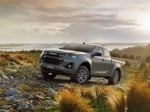Testore told Fleet News Europe the company hoped fleet sales of the Stilo would reach up to 30% of total sales in some European countries.
'Fleets are an important part of our business and although the industry is more developed in some countries than in others, the fleet market can only grow across Europe,' he said.
'We expect fleets to account for about 15 or 20% of total sales in Italy, where the fleet market is still growing, and for about 30% in the remaining main European countries. It is probably not as high as our competitors but this is just the beginning.'
He said that Fiat had developed the car's Connect system, described as 'an on-board assistant that can be asked to make a phone call, consult a road map, put on music or make an appointment' with 'fleets in mind'.
The system has been successfully introduced already on the Alfa Romeo 147.
In a presentation about the vehicle, Testore said: 'With Connect, Fiat Auto is already exploiting the potential of information and communication technology to the maximum.'
Testore said the manufacturer had spent €900 million creating the vehicle - with €700 million going on preparing for production and €200 million being spent on research and development.
He added: 'Our aim is to supply both the private motorist and the corporate user with custom-tailored mobility services that cover finance, maintenance, servicing and information. What we want to sell is mobility. Because mobility, also thanks to us, is already a customer priority today and we will more and more come to represent the future of the car.'
Commenting on the company's ambitions to become 'a force' in the C-segment,' Testore said: 'The challenge we have set ourselves is unquestionably an ambitious one, because this is Europe's most important segment, where the competitors are numerous and aggressive.'
However, he added: 'We know what we are taking on.'
Chance to make up for lost time
Fiat has struggled to establish itself as a major fleet player in Europe — largely because it has lacked a full range of competitive cars.
After killing the Croma in the early 1990s, its largest model has been the Brava-based Marea sedan and station wagon. This disqualified Fiat from the key D-segment, defined by the Ford Mondeo and Volkswagen Passat.
But now Fiat has its best chance yet to move into the fleet market. First, its global partner GM is the most experienced fleet manufacturer in Europe.
Secondly it is developing a full upper-medium segment replacement for the Croma, based on a GM platform. And thirdly, the new Stilo should win lots of new company car fans - it is a significant improvement on the Brava/ Bravo.
The Stilo excels as a driver's car - and by that, I don't mean that it handles like a Ferrari. I mean it is the sort of car that people who drive a lot will like ... people like fleet drivers.
The cabin is exemplary. The ride is soft and cosseting. It's brimming with equipment as standard. And it's one of the most spacious lower medium cars yet. For many, these factors alone make the new Stilo a fine car.
In other respects, it's unlikely to trouble the class leaders. Styling is slightly disappointing - especially the five-door. It's not the greatest handling Fiat - but then it has that softer ride.
Now the battle to woo the fleet sector begins. As long as Stilo running costs and residuals are controlled, it deserves the consideration of European fleets. Just remember - this is a car you really need to drive before deciding whether you like it or not.















Login to comment
Comments
No comments have been made yet.